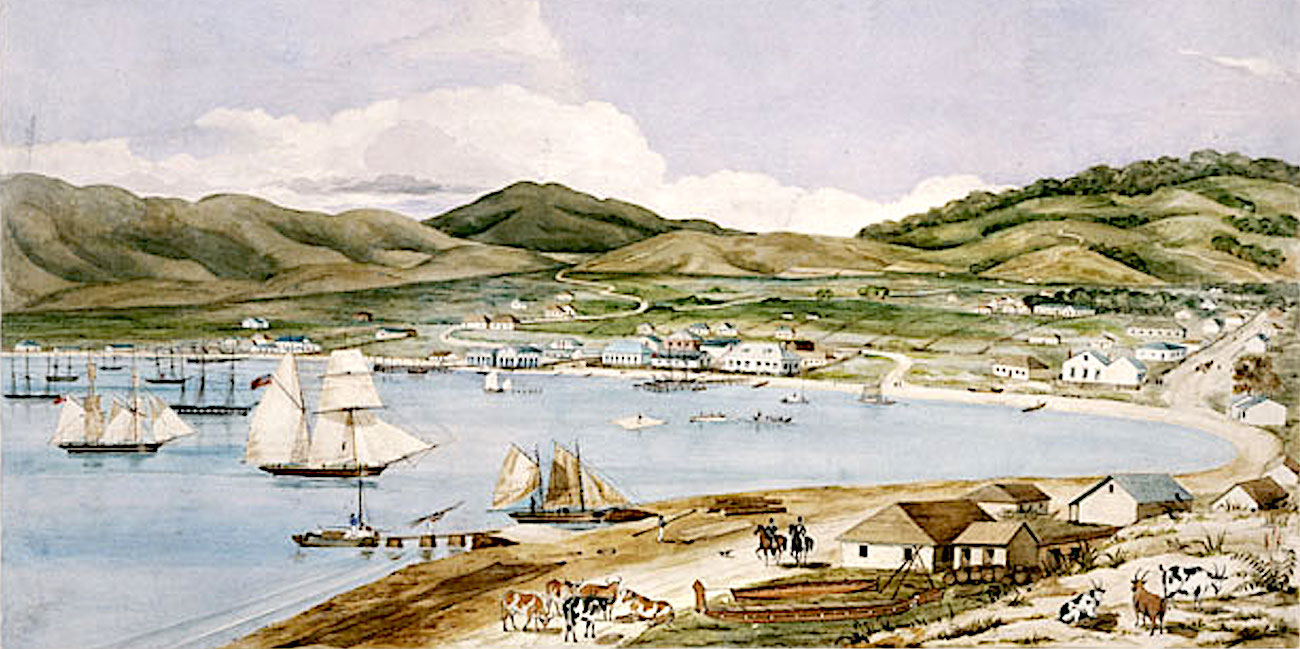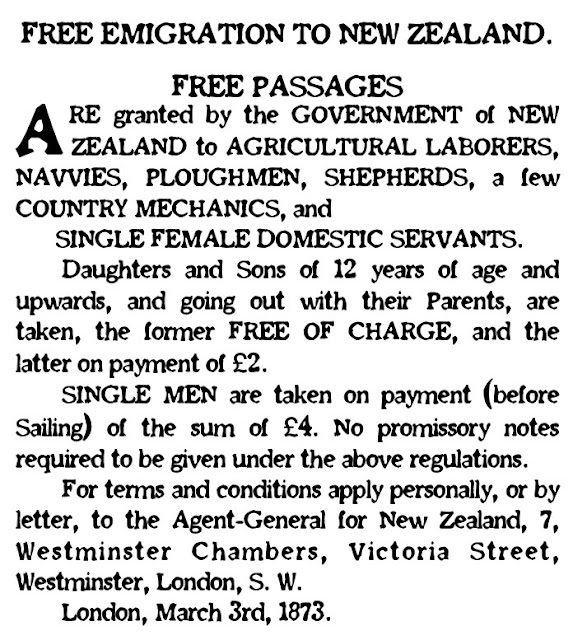 |
| New Zealand settlement, 1841. |
Following the mapping of New Zealand by Captain James Cook in 1769, Christian missionaries came to convert the Maori population in the early 1800s. By 1852 there were 28,000 European settlers in New Zealand, 18,000 from Great Britain. In the 1860s a gold rush brought 18,000 prospectors from around the world.
The New Zealand Government appointed agents across Europe to encourage immigration from 1870. In England and Scotland alone there were 130 agents. The cost of passage per adult was £5, today £600. In 1873 the New Zealand Government offered free passage to European immigrants. Newspapers advertised for applicants. Assisted immigrant numbers peaked at 32,000 in 1874 and quickly tailed off thereafter.
Why emigrate to New Zealand? The first emigrants from St Ives wrote letters home confirming their safe arrival. They told of exciting business and employment opportunities from an expanding population, of pleasant settlements and beautiful scenery. Later emigrants had the reassurance of knowing several existing and well-established settlers.
Most travelled by the cheapest means. Ship owners treated steerage class passengers like cattle. A stroll on deck was the only chance to breathe fresh air. During inclement weather passengers were forced down into steerage. Seasickness and poor sanitary arrangements created nightmare conditions. There was no privacy. Several hundred passengers slept in one compartment in what were often converted cargo holds. Bunks were stacked one above the other with no natural light. Food was unappealing, doled out in enormous pots.
 |
 |
 |



No comments:
Post a Comment